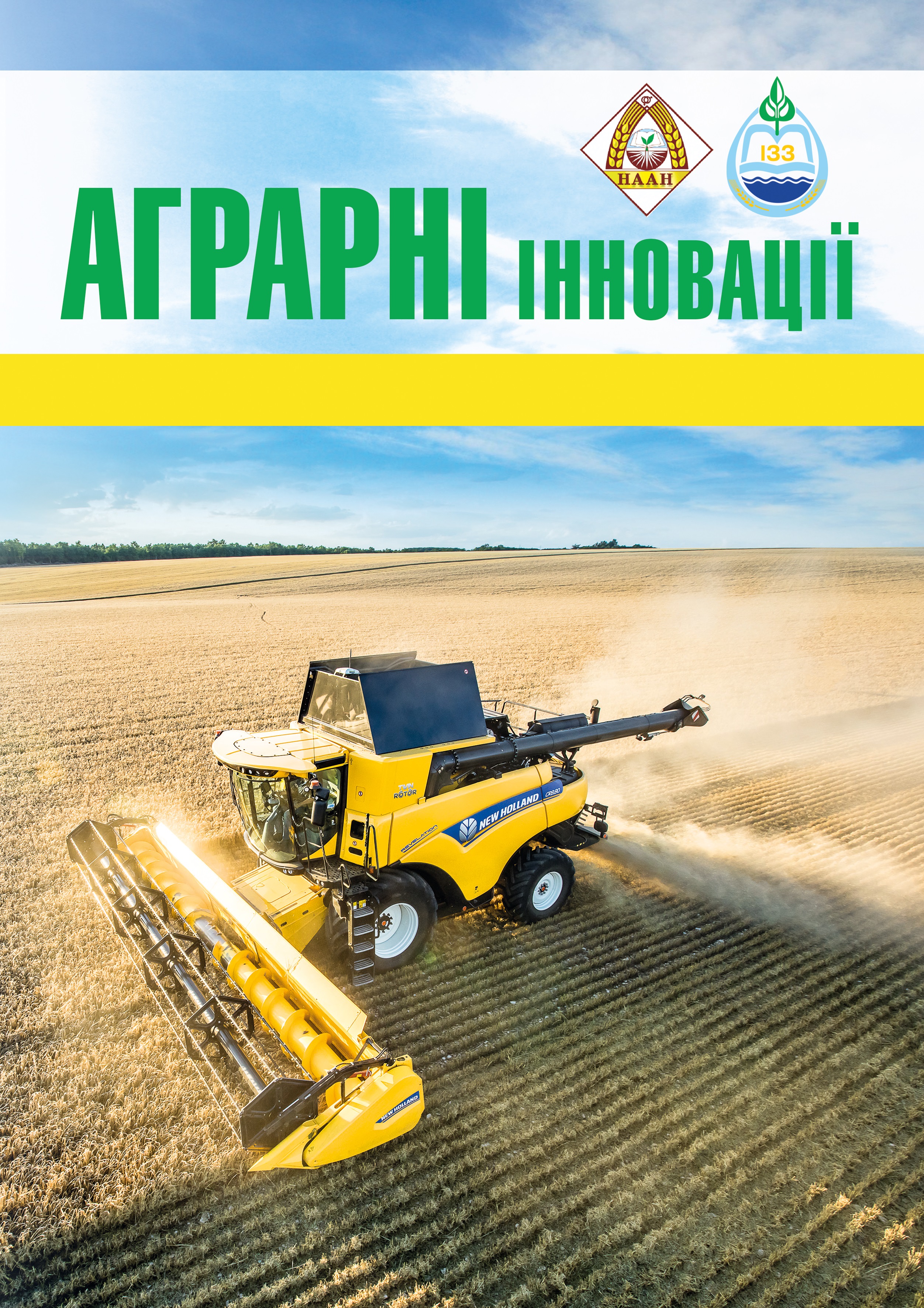Weediness of winter wheat with minimized and zero systems of basic tillage, fertilizer and greening
Abstract
The article presents the results of research on the indicators of weediness and productivity of winter wheat depending on different methods and depth of basic tillage, fertilization and greening and further impact on crop productivity in crop rotations in irrigated conditions in southern Ukraine. The aim of the research was to determine the impact of basic tillage, various fertilization and greening systems on the weediness of winter wheat crops and the subsequent impact on its productivity. During the experiment, field, quantitative-weight, visual, laboratory, calculation-comparative, mathematical-statistical methods and generally accepted in Ukraine methods and methodical recommendations were used. The research was conducted during 2016–2019 in the research fields of the Askaniiska State Agricultural Research Station of the Institute of Irrigated Agriculture of the National Academy of Agrarian Sciences of Ukraine. Research results. The results of research suggest that the use of green manure in cultivation technology increases the yield of winter wheat. Thus, against one background of mineral nutrition without sideration, the average factor B yield was 5.83 t / ha, while with its use 6.67 t / ha, which is actually 14.4% more. Conclusion. The research allow to show that with a disc cultivation of 12–14 cm in the system of differentiated tillage in the system of shallow single-depth loosening led to an increase in the number of weeds by 2.9 times. At chisel loosening to a depth of 23–25 cm in the system of different depth loosening led to an increase in the number of 2.1 times, but reduced the vegetative mass by 4.2 times compared to the control, and the largest number of weeds 33 pcs/m2 from 15.9 g/m2 vegetative mass was obtained at zero tillage. Productivity has developed in line with weeds. On average, by factor A for disk cultivation of 12–14 cm in the system of differentiated, shallow single-depth and chisel cultivation for 23–25 cm, the yield was 6.29; 6.41 and 6.18 t/ha, respectively, and at zero tillage productivity decreased by 18.9% compared to the control. At the same time, the use of green manure increased the yield on average by factor B by 14.4%.
References
2. Циков В.С., Матюха Л.П., Ткаліч Ю.І. Ефективність засобів знищення бур’янів при вирощуванні кукурудзи. Вісник аграрної науки. 2007. № 7. С. 19–24.
3. Ромащенко М.І., Балюк С.А. Зрошення земель в Україні: стан та шляхи поліпшення. Київ : Світ, 2000. 114 с.
4. Маслак О.І. Зернові перспективи України. Пропозиція. 2009. № 2. С. 34–37.
5. Сайко В.Ф. Системи обробітку ґрунту в Україні : монографія. Київ : ЕКМО, 2007. 44 с.
6. Петриченко В.Ф. Нова стратегія виробництва зернових та олійних культур в Україні : монографія. Київ : Аграрна наука, 2012. 48 с.
7. Islam R., Reeder R. No-till and conservation agriculture in the United States : An example from the David Brandt farm. Carroll, Ohio Science Direct, 2014. P. 31–35.
8. Бомба М.Я. Біологічне землеробство: стан та перспективи розвитку. Передгірне та гірське землеробство і тваринництво. 2016. № 59. С. 266.
9. Нетіс І.Т. Озима пшениця на півдні України. Херсон : Олді-плюс, 2011. 460 с.
10. Филипьев И.Д., Криштопа В.И. Гарантированное производство зерна на орошаемых землях. Киев : Урожай, 1990. С. 28–43.
11. Польовий В.М. Оптимізація систем удобрення в сучасному землеробстві : монографія. Рівне : Волинські обереги, 2007. 320 с.
12. Гудзь В.П. Землеробство з основами ґрунтознавства і агрохімії : підручник. Київ : Центр учбової літератури, 2007. 408 с.
13. Методика польових і лабораторних досліджень на зрошуваних землях : монографія / Вожегова Р.А. та ін. Херсон : Грінь Д.С., 2014. 286 с.






